Physical Address
304 North Cardinal St.
Dorchester Center, MA 02124

Top Cultural Experiences in Kyoto for First-Time Visitors- Unveiling Japan’s Cultural Heart
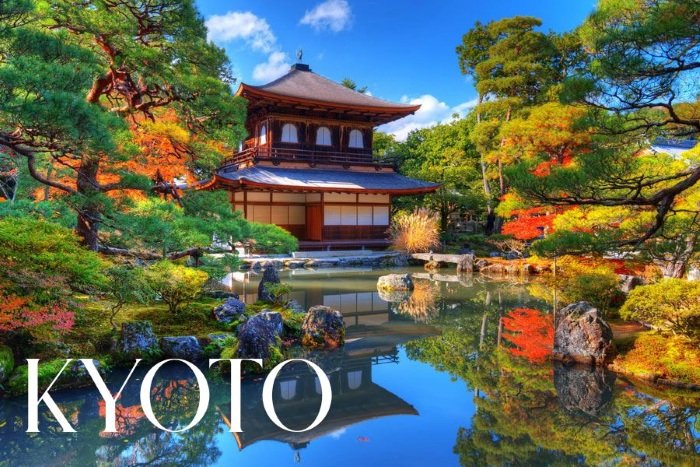
Kyoto-Japan
Stepping into Kyoto feels like walking through a living museum where ancient traditions breathe alongside modern life. As someone who has wandered these sacred streets countless times, I can tell you that Kyoto offers cultural treasures that will transform your understanding of Japan forever. Whether you’re seeking cheap flights and budget-friendly hotels or planning luxury cultural immersion, this ancient capital promises experiences that will etch themselves into your memory.
Meta Description: Discover Kyoto’s top cultural experiences for first-time visitors. From traditional tea ceremonies to ancient temples, explore Japan’s cultural heart with budget-friendly tips and insider secrets for an unforgettable journey.
Have you ever wondered what it feels like to step into a thousand-year-old sanctuary where monks have chanted the same prayers for generations? Kyoto’s temples aren’t just tourist attractions,they’re gateways to understanding Japan’s spiritual soul.
Kiyomizu-dera Temple stands like a wooden guardian over the city, its famous stage offering breathtaking views that change with each season. The sound of wooden floors creaking beneath your feet echoes through centuries of pilgrims who walked these same paths. Entry costs only 400 yen, making it one of the most budget-friendly cultural experiences you’ll find.
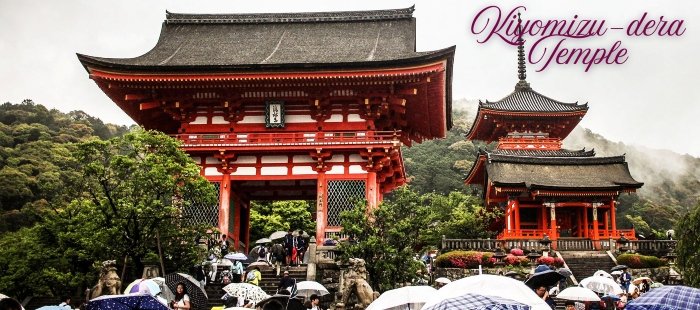
Kiyomizu-dera Temple
Early morning visits reveal hidden gems that most tourists miss. The temple grounds come alive with the gentle rustle of prayer papers tied to wooden stakes, each one carrying someone’s deepest wishes. Local tip: arrive before 8 AM to experience the morning prayers,a moment of pure tranquility that costs nothing but offers everything.
Fushimi Inari Shrine transforms into an entirely different world as you climb through thousands of vermillion torii gates. The path winds up Mount Inari like a red ribbon, and with each step, the city noise fades into whispered conversations between bamboo leaves. This experience is completely free, though the climb requires good walking shoes and water.
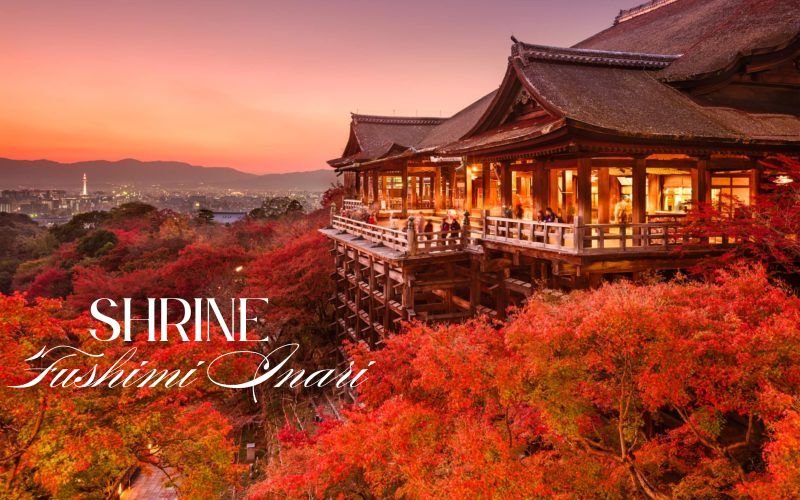
Fushimi Inari Shrine
For those seeking undiscovered treasures, Sanzen-in Temple in nearby Ohara offers a glimpse into Japan’s spiritual heart without the crowds. The moss gardens here seem to glow with an inner light, especially during autumn when maple leaves create a natural carpet of gold and crimson.
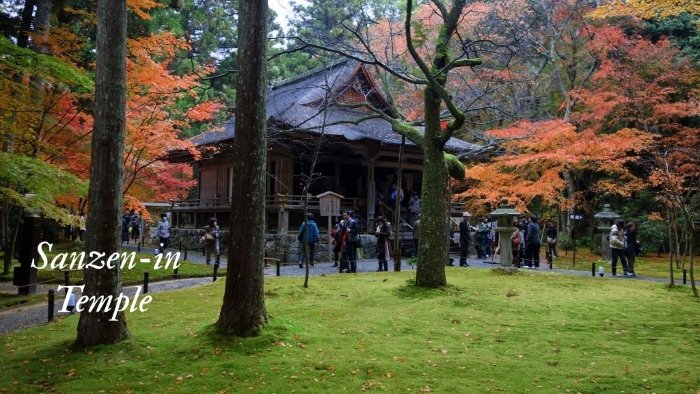
Sanzen-in Temple
The temple’s tea house serves traditional sweets for just 500 yen,a perfect way to rest while contemplating the view. This cultural experience represents the essence of Japanese aesthetics: finding profound beauty in simplicity.
Nothing prepared me for my first authentic tea ceremony in a traditional machiya townhouse. The ritual begins before you even taste the tea,it’s in the way sunlight filters through shoji screens, the careful arrangement of seasonal flowers, and the hypnotic rhythm of the tea master’s movements.
Urasenke Foundation offers authentic tea ceremony experiences for 3,000 yen, including English instruction. You’ll learn that every gesture has meaning, from how you hold the bowl to the angle at which you bow. The experience teaches patience in our fast-paced world,a lesson worth far more than the modest price.
For budget-conscious travelers, several temples offer simplified tea ceremonies for under 1,000 yen. Kennin-ji Temple provides an excellent introduction, where you’ll sit in a traditional tea room overlooking a zen garden. The contrast between the bitter matcha and sweet wagashi confections mirrors life itself,a beautiful balance of opposing forces.
What makes these experiences truly special isn’t just the tea,it’s the connection to centuries of Japanese philosophy. The tea master at a small establishment near Gion once told me, “Tea ceremony isn’t about drinking tea; it’s about drinking time.” This wisdom stays with you long after you’ve returned home.
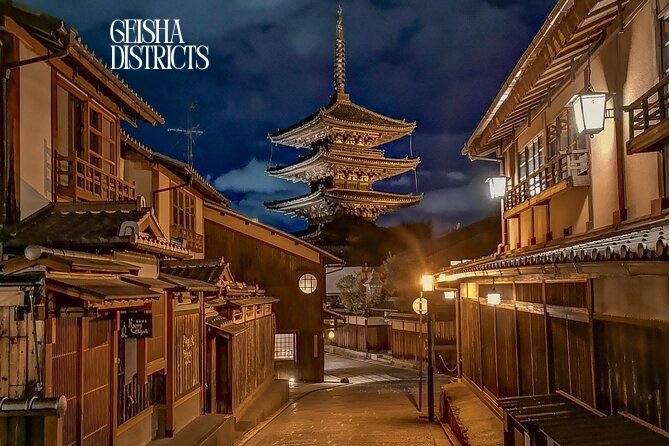
Geisha Districts: Stepping into Living History
Walking through Gion at twilight feels like traveling through time itself. The soft click of wooden geta sandals on stone paths, the rustle of silk kimonos, and the warm glow from traditional lanterns create an atmosphere you won’t find anywhere else in the world.
Hanami-koji Street serves as the main artery of Gion, lined with ochaya (tea houses) where geishas have entertained guests for centuries. While exclusive dinners can cost thousands, you can experience the magic simply by walking these streets during the evening hours when geishas hurry to their appointments.
The key to respectful geisha spotting lies in understanding their culture. These are working professionals, not tourist attractions. A polite bow and respectful distance shows appreciation for their artistry. Photography should be avoided unless permission is explicitly given.
Pontocho Alley offers another glimpse into geisha culture within a more intimate setting. This narrow lane, barely wide enough for two people to pass, houses traditional restaurants where you might catch a glimpse of maiko (apprentice geishas) through wooden lattice windows.
For deeper cultural immersion, consider attending a public performance at Gion Corner, where various traditional arts are showcased for 3,150 yen. You’ll witness not just geisha dances, but also tea ceremony, flower arrangement, and traditional music,a comprehensive introduction to Japanese cultural arts.
Many visitors discover hidden gems in the backstreets of Miyagawa-cho, a smaller geisha district where the atmosphere feels more authentic and less touristed. Here, family-run establishments serve traditional kaiseki meals at more reasonable prices, often under 5,000 yen per person.
There’s something magical about creating art with your own hands using techniques passed down through generations. Kyoto’s craft workshops offer intimate connections with Japanese culture that you simply can’t get from observation alone.
Kiyomizu-yaki pottery workshops near Kiyomizu Temple let you shape clay on the same wheels used by masters for centuries. The 2,500 yen experience includes instruction and firing, with your piece shipped home as a tangible memory. The satisfaction of creating something beautiful with your hands while learning about centuries-old techniques provides incredible value.
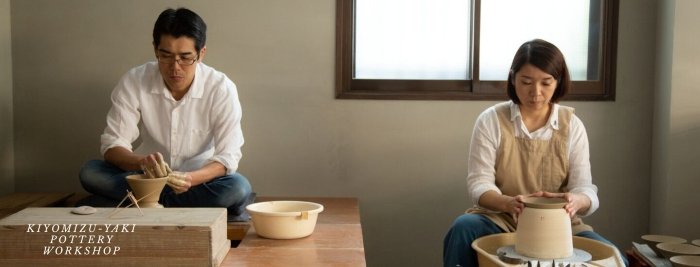
Kiyomizu-yaki pottery workshop
In a small workshop tucked away in Nishiki Market, I discovered the art of furoshiki wrapping. This traditional cloth wrapping technique transforms simple fabric into elegant gift wrapping, shopping bags, or decorative elements. The workshop costs only 1,800 yen and you leave with beautiful fabric and skills you’ll use forever.
Kimono dyeing workshops in the Arashiyama district offer chances to create your own textile art. Using natural indigo dyes, you’ll learn shibori techniques that produce stunning patterns. At 4,000 yen for a half-day experience, it’s an investment in both learning and creating something uniquely yours.
For families seeking cultural experiences, calligraphy workshops provide excellent value at around 2,000 yen per person. Children and adults alike find joy in brush painting Japanese characters, and many workshops provide English instruction. The meditative quality of brush strokes helps everyone slow down and appreciate the moment.
These hands-on cultural experiences create memories that photographs cannot capture. The satisfaction of learning traditional skills connects you to Japanese culture in a deeply personal way.
Kyoto’s festival calendar reads like poetry written in seasons, each celebration offering unique cultural insights. Having experienced the city through different seasons, I can tell you that timing your visit around these festivals transforms your entire journey.
Spring brings Hanami celebrations that turn the entire city into a pink and white wonderland. While many focus on famous spots like Maruyama Park, locals know that Philosopher’s Path offers equally beautiful cherry blossoms with fewer crowds. The tradition of hanami parties under blooming trees costs nothing but brings immense joy,simply purchase bento boxes from convenience stores for under 500 yen each.
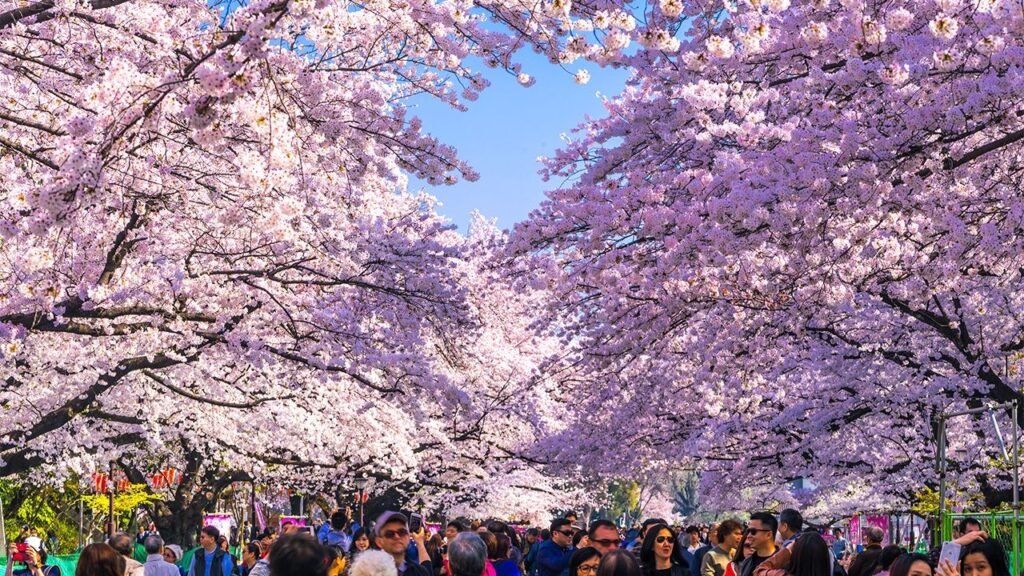
Hanami celebration
Gion Matsuri in July represents one of Japan’s most famous festivals, though many visitors don’t realize the celebration lasts the entire month. The highlight comes with the yamaboko procession on July 17th, where massive floats parade through the streets. Watching from street level is free, though reserved seating costs around 3,000 yen.
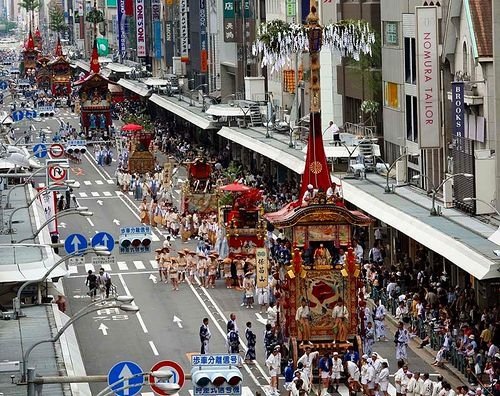
yamaboko procession
The real magic happens in the evenings leading up to the procession, when neighborhoods open their traditional homes to display family heirlooms and serve local delicacies. These private glimpses into Kyoto life provide authentic cultural exchanges that money cannot buy.
Autumn transforms Kyoto into a masterpiece painted in shades of gold, orange, and deep red. Tofuku-ji Temple becomes especially spectacular, though early morning visits (before 8 AM) help avoid crowds while witnessing the morning light filtering through maple leaves,a sight that has inspired poets for centuries.
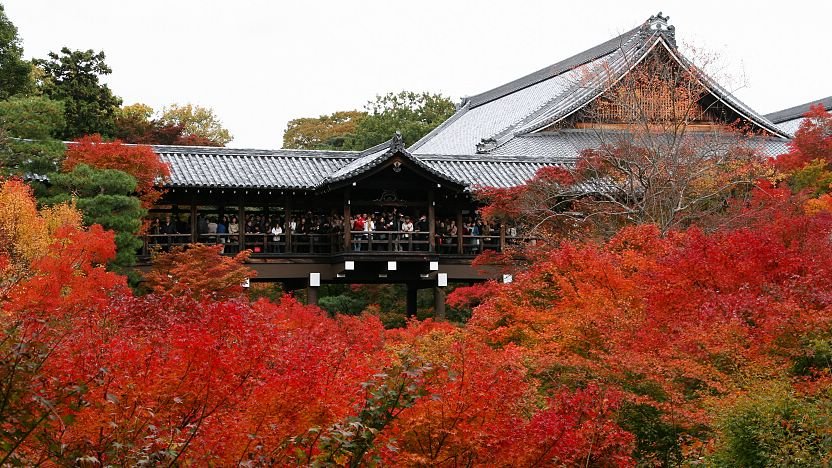
Tofuku-jifi Autumn Temple
Many temples charge special autumn viewing fees (usually 400-600 yen), but the investment provides access to some of Japan’s most photographed landscapes. For budget travelers, public parks like Kyoto Imperial Palace grounds offer equally stunning autumn colors completely free.
Winter brings contemplative beauty often overlooked by tourists. Kinkaku-ji (Golden Pavilion) covered in snow creates reflections in the surrounding pond that seem almost otherworldly. The contrast between gold and white provides photo opportunities that seem too perfect to be real.
This seasonal approach to planning travel trips ensures you experience Kyoto at its most magical moments while connecting with local traditions that define Japanese culture.
Cultural immersion doesn’t require unlimited budgets,some of Kyoto’s most profound experiences cost very little or nothing at all. After years of exploring this city, I’ve discovered that the most meaningful cultural connections often happen in the most unexpected places.
Free temple visits provide incredible value when you know where to look. Nanzen-ji Temple’s main grounds cost nothing to explore, though the famous Sanmon gate requires a 500 yen fee. The temple’s aqueduct, built during the Meiji period, offers a unique blend of ancient and modern Japanese engineering that history enthusiasts will appreciate.
Local markets like Nishiki Market offer cultural education through your taste buds. Vendors often provide free samples of traditional foods, and the 400-meter stretch teaches you about Japanese culinary traditions. Budget around 2,000 yen for a filling market tour, including multiple snacks and local specialties.
Public gardens throughout Kyoto provide peaceful spaces for contemplation and people-watching. Kyoto Imperial Palace Park opens daily with no entrance fee, offering beautifully maintained gardens and glimpses of traditional Japanese landscape design. Pack a convenience store lunch for under 800 yen and enjoy a perfect cultural picnic.

Kyoto Imperial Palace Park
Neighborhood exploration in areas like Nijo reveals authentic local life away from tourist crowds. Traditional wooden houses line quiet streets where you’ll encounter local shrines maintained by neighborhood associations. These hidden gems represent the real Kyoto where families have lived for generations.
University districts around Kyoto University offer youthful energy mixed with traditional culture. Small cafes serve excellent coffee for under 400 yen, and bookshops display English translations of Japanese literature. The area provides insight into modern Japanese intellectual life.
For families planning cultural adventures, children’s workshops at community centers often welcome tourists. These activities, usually priced under 1,000 yen per child, include origami, simple calligraphy, and traditional games. Contact the Kyoto Tourist Information Center for current schedules and availability.
These budget-conscious approaches to family trip planning prove that meaningful cultural experiences depend more on curiosity and respect than on spending power.
Understanding Kyoto’s transportation system unlocks the city’s cultural treasures efficiently and affordably. The key lies in thinking like a local rather than a tourist, choosing methods that provide cultural insights along with practical transportation.
Kyoto City Bus system serves as your gateway to cultural exploration with day passes costing just 600 yen. Route 100 connects major temples and shrines, while Route 5 takes you through traditional neighborhoods most tourists never see. The buses themselves offer cultural lessons,notice how passengers maintain quiet conversations and offer seats to elderly riders.
Bicycle rentals transform sightseeing into cultural immersion. Pedaling through narrow streets reveals details you’d miss from bus windows: the sound of temple bells echoing between buildings, the smell of incense drifting from neighborhood shrines, and glimpses into traditional gardens through gaps in wooden fences. Daily rentals cost around 1,000 yen and provide freedom to discover undiscovered treasures at your own pace.
Walking routes connect cultural sites while teaching you about urban Japanese life. The path from Kiyomizu-dera to Gion winds through Sannenzaka and Ninenzaka, historic preserved streets lined with traditional shops selling everything from handmade ceramics to matcha ice cream. This route costs nothing but provides immeasurable cultural value.
Subway connections work best for reaching outlying temples like Fushimi Inari or Arashiyama. The Keihan Main Line to Fushimi-Inari Station costs just 260 yen from central Kyoto and provides views of residential neighborhoods where real Kyoto life happens away from tourist areas.
Train travel to nearby areas opens additional cultural possibilities. JR Nara Line reaches Uji, famous for green tea culture, in just 30 minutes for 240 yen. The journey itself passes through rural landscapes that show Japan’s agricultural heritage.
Understanding these transportation patterns helps you integrate into local life rather than moving through it as an outsider. This approach to planning tourist routes ensures you experience Kyoto’s cultural depth rather than just its surface attractions.
Your accommodation choice shapes your entire cultural experience in Kyoto. Location matters more than luxury when you want authentic immersion in Japanese daily life. Here’s how to choose accommodations that become part of your cultural journey rather than just places to sleep.
Traditional Ryokan experiences provide the most authentic cultural immersion, though prices vary dramatically. Budget ryokans in residential areas like Nijo offer tatami rooms, shared baths, and traditional breakfast for under 8,000 yen per night. These family-run establishments provide personal attention and insights into Japanese hospitality that large hotels cannot match.
The morning routine at a traditional ryokan teaches you about Japanese customs: removing shoes at entrances, proper use of yukatas (light kimono), and the art of communal bathing. Your hosts often speak some English and love sharing recommendations for lesser-known cultural sites.

The morning routine at a traditional ryokan
Guesthouses in traditional neighborhoods combine budget-friendly prices with cultural authenticity. Pontocho and Miyagawa-cho areas offer accommodations where you’ll fall asleep to the sounds of shamisen music drifting from nearby tea houses. Prices typically range from 3,000 to 6,000 yen per night for dormitory-style rooms.
Machiya townhouse rentals provide family-friendly cultural experiences for groups. These traditional wooden houses feature interior gardens, sliding doors, and architectural details unchanged for decades. Splitting costs among family members often makes these options competitive with hotels while providing infinitely more cultural value.
Modern hotels in cultural districts offer comfort while maintaining location advantages. Business hotels near Kyoto Station provide efficient service and competitive rates (around 7,000 yen per night) with easy access to transportation networks. While less culturally immersive, they serve as excellent bases for daily cultural explorations.
Temple lodging (shukubo) at places like Mount Koya day trips from Kyoto offer unique overnight cultural experiences. You’ll participate in morning prayers, eat traditional Buddhist vegetarian meals, and sleep in tatami rooms within working religious communities. These experiences typically cost 9,000-12,000 yen including meals and provide unforgettable insights into Japanese spiritual life.
Location considerations matter enormously for cultural immersion. Staying near Nishiki Market puts you at the heart of Kyoto’s culinary culture, while accommodations near Philosopher’s Path provide peaceful morning walks through some of the city’s most beautiful temple grounds.
This strategic approach to accommodation selection transforms your lodging from mere necessity into integral parts of your cultural journey, providing value that extends far beyond comfortable beds and clean bathrooms.
Food in Kyoto tells stories,stories of seasons, traditions, and the delicate balance between simplicity and sophistication that defines Japanese culture. Every meal becomes a cultural lesson when you know where to look and how to appreciate what you’re experiencing.
Kaiseki dining represents the pinnacle of Japanese culinary artistry, though accessibility varies greatly by budget. High-end establishments can cost 20,000 yen or more per person, but lunch kaiseki at respected restaurants often provides similar quality for under 8,000 yen. The presentation alone teaches you about Japanese aesthetics,notice how each dish reflects the current season through colors, ingredients, and plating.
The ritual of kaiseki dining moves slowly, encouraging conversation and contemplation between courses. Each dish arrives as a small work of art, meant to be appreciated visually before tasting. This mindful approach to eating contrasts sharply with fast-paced Western dining and provides insights into Japanese philosophy about appreciating life’s small pleasures.
Traditional breakfast at local establishments provides cultural education along with nourishment. Ochazuke (tea over rice) might seem simple, but the combination of flavors and textures represents comfort food that has sustained Japanese families for generations. Small neighborhood restaurants serve authentic versions for under 800 yen, often accompanied by miso soup, pickled vegetables, and grilled fish.
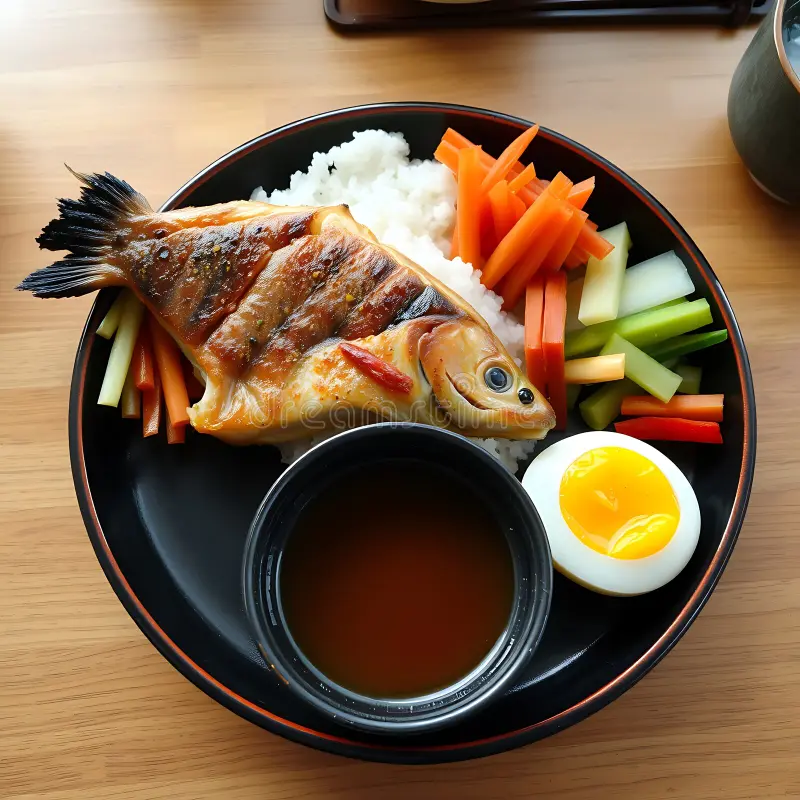
miso soup, pickled vegetables, and grilled fish.
Nishiki Market exploration becomes a cultural adventure when you approach vendors with curiosity and respect. Tofu vendors often offer free samples of fresh soy milk, while pickle specialists explain fermentation processes that preserve vegetables through winter months. Budget around 3,000 yen for a thorough market exploration including multiple tastings and small purchases.
Local drinking culture centers around small establishments called izakaya, where food and alcohol create social connections. These neighborhood gathering places serve simple dishes designed for sharing,yakitori, gyoza, and seasonal vegetables,while fostering conversations between strangers. Expect to spend 2,500-4,000 yen per person for food and drinks in authentic local establishments.
Tea culture extends far beyond formal ceremonies into daily life. Coffee shops throughout Kyoto often serve both Western coffee and traditional Japanese teas, creating spaces where locals read, work, and socialize. Kissaten (traditional coffee shops) provide glimpses into Japan’s adaptation of Western culture while maintaining distinctly Japanese characteristics.
Sweet traditions like wagashi (traditional confections) teach you about seasonal awareness and artistic presentation. Department store basement food floors offer incredible selections of these edible artworks, with prices ranging from 200-500 yen per piece. Each sweet reflects the current season through shapes, colors, and flavors that change monthly.
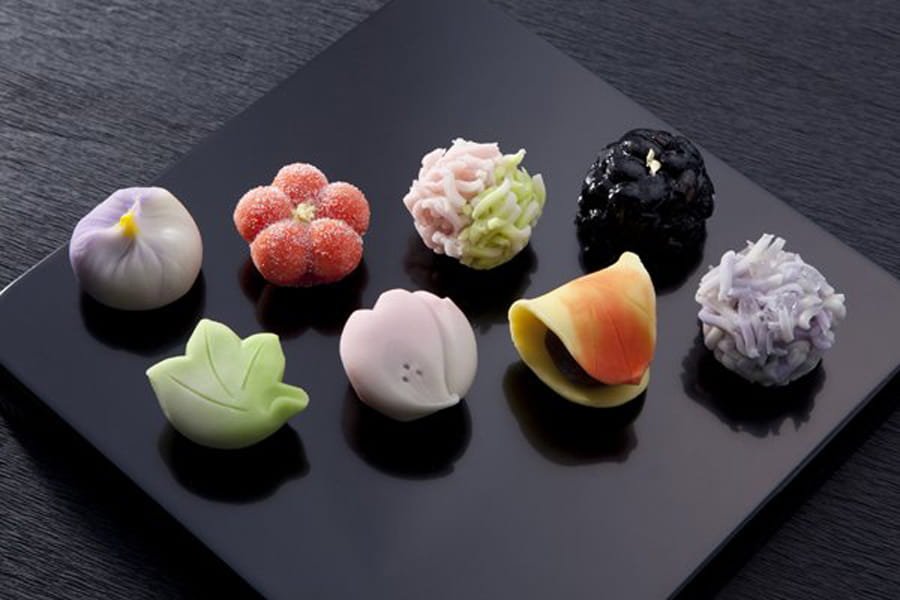
wagashi-Sweet traditions
Street food culture in areas like Teramachi provides casual introductions to Japanese flavors. Taiyaki (fish-shaped pastries filled with sweet red bean paste) cost just 150 yen and provide warm comfort during cold weather exploration. Dango (sweet rice dumplings) offer portable sustenance that local families have enjoyed for centuries.
This culinary approach to cultural exploration ensures that every meal contributes to your understanding of Japanese life, values, and traditions. Food becomes a bridge connecting you to local communities and historical traditions that define Kyoto’s cultural identity.
Understanding Japanese cultural etiquette transforms tourists into respectful cultural participants. These aren’t just rules to follow,they’re keys to unlocking deeper cultural connections and more meaningful experiences throughout your journey.
Temple and shrine behavior follows specific patterns that show respect for sacred spaces. Bow before entering shrine grounds, purify hands and mouth at water basins, and remain quiet during prayer times. Photography rules vary by location, but when in doubt, observe what local visitors do and follow their example.
The purification ritual at shrine entrances teaches mindfulness,use the ladle to rinse your left hand, then right hand, then rinse your mouth (without drinking). This process prepares you mentally and spiritually for entering sacred space, creating a transition from everyday concerns to contemplative awareness.
Gift-giving customs provide opportunities for cultural exchange when done thoughtfully. Small gifts from your home country (postcards, pins, local specialties) show appreciation when given to helpful locals or accommodation hosts. Present gifts with both hands and a slight bow,this gesture demonstrates respect and gratitude in ways that words alone cannot express.
Dining etiquette opens doors to local acceptance and deeper cultural understanding. Never stick chopsticks upright in rice (this resembles funeral practices), pass food from chopstick to chopstick only during cremation ceremonies, and say “itadakimasu” before eating and “gochisousama” after finishing. These phrases show gratitude for the meal and respect for those who prepared it.
Public behavior standards in Kyoto remain more formal than many Western cities. Keep conversations quiet on public transportation, avoid eating while walking (except in designated areas), and be mindful of photography, especially of people in traditional dress. Geishas and maiko are working professionals deserving the same respect you’d show any professional in their workplace.
Tipping practices differ completely from Western customs,tipping can actually cause offense or confusion. Instead, show appreciation through polite behavior, sincere thanks, and respectful treatment of staff and facilities. Quality service is considered standard rather than something requiring additional payment.
Dress considerations for temple visits require covered shoulders and long pants or skirts. While enforcement varies, dressing conservatively shows respect for religious spaces and local customs. Many temples provide covering cloths for visitors who arrive unprepared, but bringing appropriate clothing demonstrates cultural awareness.
Language efforts, even basic attempts, create positive connections with locals. Learn simple phrases like “arigatou gozaimasu” (thank you very much), “sumimasen” (excuse me/sorry), and “eigo ga wakarimasu ka?” (do you understand English?). Your effort to communicate in Japanese, however limited, shows respect for local culture and often results in more helpful, friendly interactions.
Photography ethics require special attention in cultural settings. Always ask permission before photographing people, respect “no photography” signs in temples and museums, and be mindful of others’ experiences when taking pictures. Some of the most meaningful cultural moments happen when you put the camera down and simply experience the present moment.
These cultural guidelines transform your visit from simple sightseeing into respectful cultural exchange, creating positive interactions that benefit both visitors and local communities while preserving the authentic character that makes Kyoto special.
Kyoto reveals different cultural personalities throughout the year, each season offering unique experiences that cannot be replicated at other times. Understanding seasonal rhythms helps you align your visit with the cultural experiences that matter most to you.
Spring (March-May) brings Japan’s most famous cultural celebration,cherry blossom season. But timing within this period makes enormous differences in both costs and experiences. Early March offers plum blossoms with fewer crowds and lower accommodation prices, while late April to early May presents peak cherry blossoms with corresponding peak prices and crowds.
Hanami culture teaches important lessons about Japanese values: appreciating transient beauty, gathering with family and friends, and finding joy in simple pleasures. Local hanami spots like Maruyama Park become outdoor living rooms where families spread blue tarps, share homemade food, and celebrate spring’s arrival together.
The Golden Week period (late April to early May) transforms Japan into a domestic tourist destination, with many cultural sites becoming crowded with Japanese families on vacation. This provides excellent opportunities to observe local family dynamics and cultural traditions, though international visitors should expect higher prices and fuller accommodations.
Summer (June-August) brings intense heat and humidity, but also incredible cultural festivals that many international visitors miss. Gion Matsuri throughout July offers the year’s most important cultural celebration, with neighborhood events, traditional music, and community participation that extends far beyond the famous parade day.
Evening summer activities become essential for comfort and cultural appreciation. Night temple illuminations create magical atmospheres impossible to experience during other seasons, while evening festivals in local neighborhoods provide authentic community experiences away from major tourist sites.
Autumn (September-November) rivals spring for natural beauty while offering more comfortable weather and arguably superior cultural experiences. Temple autumn illuminations create spectacular nighttime visits, while harvest festivals throughout the region celebrate local agriculture and traditional preservation techniques.
Maple leaf viewing (momiji-gari) follows similar patterns to cherry blossom appreciation but with longer viewing periods and more predictable timing. Peak autumn colors typically occur from mid-November to early December, providing reliable planning opportunities for travelers seeking specific seasonal experiences.
Winter (December-February) offers the most intimate cultural experiences with the smallest crowds and lowest prices. Snow-covered temples create postcard-perfect scenes, while traditional winter foods appear in markets and restaurants. New Year celebrations provide fascinating insights into Japan’s most important cultural holiday, though many sites close from December 29 to January 3.
Winter illuminations throughout Kyoto transform the city into a wonderland of lights, while kotatsu culture in traditional restaurants lets you experience authentic Japanese winter comfort. Hot spring day trips from Kyoto become especially appealing during cold months, offering relaxation after days of cultural exploration.
Weather considerations affect cultural experiences significantly. Rain gear becomes essential during tsuyu (rainy season) in June and July, while layered clothing helps you adapt to temperature variations between heated indoor spaces and cold outdoor temple grounds during winter months.
This seasonal approach to planning travel trips ensures you experience Kyoto when it aligns with your interests, budget, and cultural goals, maximizing both enjoyment and authentic cultural engagement.
The most profound cultural experiences often happen away from famous attractions, in quiet corners where authentic Kyoto life continues unchanged by tourism. These hidden gems provide insights into local culture that crowded temples cannot offer.
Kurama to Kibune hiking trail offers more than scenic beauty,it connects two historically significant villages through mountain paths walked by pilgrims for over a thousand years. The 3-kilometer trail takes about 90 minutes and costs nothing beyond train fare to reach the trailheads. Along the way, small shrines and forest paths provide meditation opportunities that busy temple grounds cannot match.
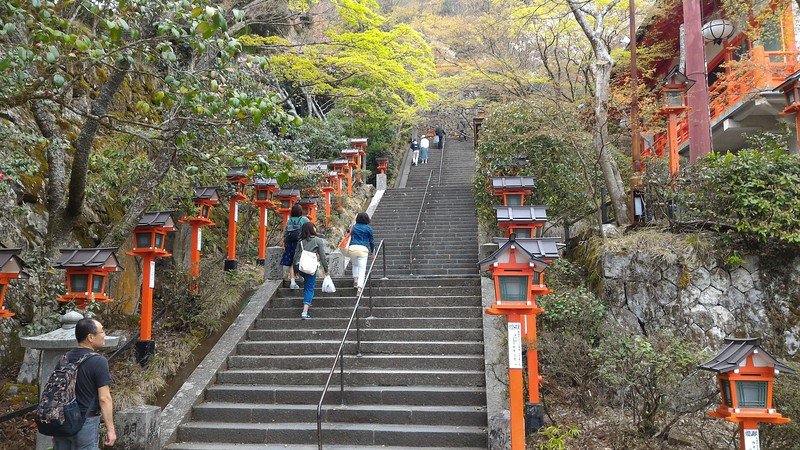
Kurama to Kibune hiking
Kibune’s riverside dining from May through September creates unique cultural experiences where restaurants build platforms over mountain streams. The sound of flowing water, traditional architecture, and seasonal cuisine combine to create dining experiences that epitomize Japanese harmony with nature. While prices range from 4,000-8,000 yen per person, the cultural value justifies the expense for special occasion dining.
Local neighborhood shrines throughout residential areas provide authentic religious experiences without crowds or entrance fees. Yasaka Shrine’s smaller subsidiary shrines, tucked into neighborhoods behind the main complex, offer peaceful prayer opportunities where local families bring children for traditional blessings and seasonal celebrations.
Traditional craft districts like Nishijin preserve weaving traditions that supply Kyoto’s textile needs. Walking through these neighborhoods reveals workshops where artisans create obi (kimono sashes) and other traditional textiles using techniques unchanged for centuries. Many workshops welcome respectful visitors and some offer demonstrations by appointment.
University district exploration around Kyoto University provides insights into intellectual life and student culture. Used bookshops contain treasures including English translations of Japanese literature, while student-friendly restaurants serve authentic, inexpensive meals that local families frequent. This area represents modern Japanese culture mixing with academic traditions.
Farmers markets in neighborhoods like Nijo occur weekly and provide direct connections with local agriculture and food traditions. Vendors often speak limited English but communicate enthusiastically about their products through gestures and samples. These markets teach you about seasonal eating and regional specialties while supporting local farmers and food producers.
Traditional bathhouses (sento) in residential neighborhoods offer cultural experiences that most tourists never discover. These public baths serve local communities and follow strict etiquette rules, but provide authentic insights into Japanese bathing culture and community social interactions. Entry costs around 450 yen and includes use of basic amenities.
Local festivals in residential areas throughout the year provide community celebration experiences without tourist crowds. Neighborhood matsuri (festivals) feature local food vendors, traditional games, and community performances that welcome friendly visitors who show genuine interest and respect.
Traditional gardens maintained by local communities often remain hidden behind residential streets. These small spaces demonstrate Japanese garden principles on intimate scales, showing how aesthetic concepts adapt to limited urban space while maintaining essential design elements.
Artisan workshops in residential areas often welcome visitors interested in traditional crafts. Bamboo craftspeople, ceramic artists, and textile workers sometimes provide informal demonstrations or brief conversations about their work, offering insights into traditional Japanese craftsmanship that survive in modern urban settings.
These authentic experiences create connections with contemporary Japanese culture while revealing how traditional values adapt to modern life. The key lies in approaching these opportunities with genuine curiosity, respect, and appreciation for the communities that maintain them.
Kyoto offers exceptional cultural experiences for families, though success requires understanding how Japanese culture approaches children and family activities. The key lies in adapting cultural exploration to include younger travelers while respecting local customs and expectations.
Temple visits with children require special consideration for both cultural appropriateness and practical management. Morning visits work best when children are fresh and temperatures are cooler, while shorter visits to multiple temples often succeed better than extended stays at single locations. Many temples provide English signage explaining cultural significance in child-friendly language.
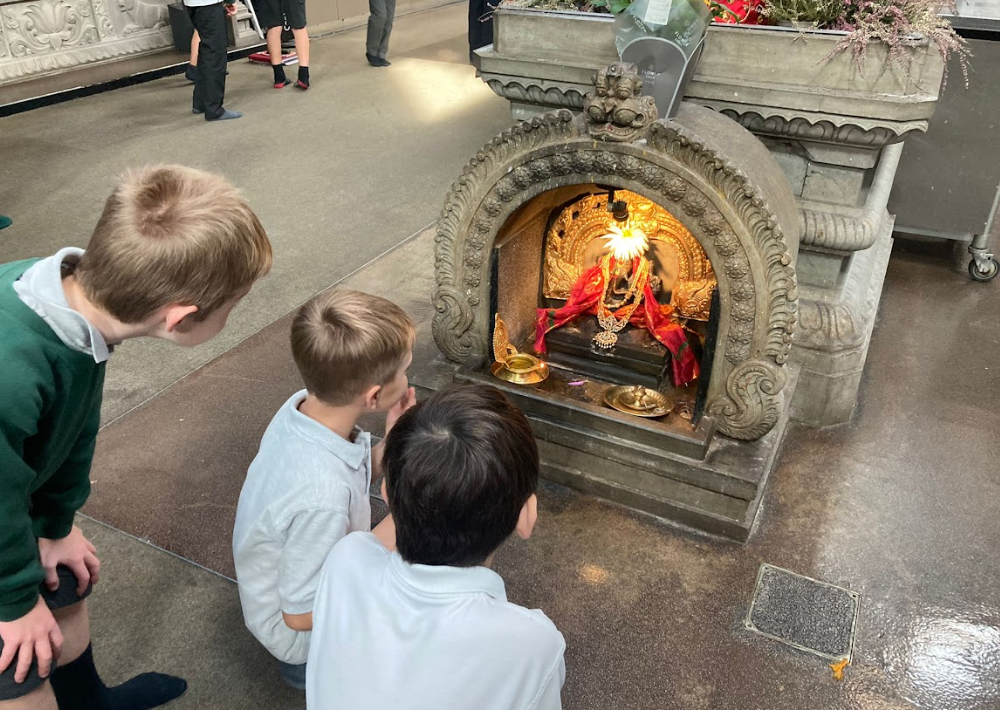
Temple visits with children
Interactive cultural experiences engage children more effectively than passive observation. Origami workshops throughout the city welcome families and provide take-home artifacts that extend cultural learning beyond the visit. Simple pottery experiences let children create their own ceramic pieces while learning about traditional Japanese crafts.
Cultural dress-up experiences provide exciting opportunities for family photos and cultural role-playing. Kimono rental shops often provide children’s sizes and simplified dressing procedures for family groups. While adult kimono rental can cost 3,000-5,000 yen, children’s versions often cost half that amount and create memorable cultural connections.

Kimono rental shops often provide children’s sizes
Food exploration becomes family adventure when approached systematically. Department store basement food courts offer incredible variety in safe, clean environments where children can try small portions of various Japanese foods. Plastic food displays outside restaurants help children identify appealing options before entering establishments.
Traditional games and toys available in tourist areas provide cultural education through play. Kendama (cup and ball toys), origami paper, and traditional spinning tops cost very little but provide hours of entertainment while teaching children about Japanese play culture.
Festival participation creates family memories while providing authentic cultural experiences. Local matsuri often include games, food stalls, and activities designed for children, while seasonal celebrations like Tanabata (star festival) encourage family participation in traditional customs.
Transportation strategies for families require advance planning but provide cultural learning opportunities. Children under 6 ride free on public transportation, while IC cards simplify fare payment and teach children about Japanese technology integration into daily life.
Accommodation choices significantly impact family cultural experiences. Ryokan with family rooms provide traditional Japanese living experiences, including tatami mat sleeping, communal bathing (often with family bath options), and traditional breakfast service that exposes children to Japanese dining customs.
Cultural etiquette education becomes family learning opportunity when approached positively. Bowing practice, chopstick skills, and quiet public behavior become games that teach children about cultural differences while building respect for local customs.
Seasonal activities provide natural family cultural education. Cherry blossom viewing becomes picnic adventures, autumn leaf collecting turns into art projects, and winter snow play in temple grounds creates magical cultural memories that combine natural beauty with historical settings.
This family-focused approach to family trip planning ensures that cultural exploration becomes shared adventure rather than endurance test, creating positive associations with cultural learning that extend far beyond your Kyoto visit.
Successful cultural immersion in Kyoto requires strategic planning that balances must-see attractions with authentic local experiences. The key lies in understanding how cultural sites, transportation, and daily rhythms work together to create meaningful rather than rushed experiences.
Daily rhythm planning should mirror Japanese cultural values about balance and mindfulness. Morning temple visits from 8-10 AM provide peaceful experiences before crowds arrive, while afternoon cultural workshops offer hands-on learning when morning activities wind down. Evening neighborhood exploration reveals authentic local life as residents return from work and school.
Cultural site combinations create logical daily themes rather than random sightseeing. Eastern Kyoto cultural route connects Kiyomizu-dera, Gion district, and Philosopher’s Path through walkable distances that reveal neighborhood character between major attractions. Northwestern cultural exploration combines Kinkaku-ji, Ryoan-ji, and Ninna-ji with traditional garden experiences.
Budget allocation strategies ensure cultural experiences receive appropriate investment while controlling overall costs. Transportation day passes at 600 yen provide unlimited city bus access, while temple admission fees typically range from 300-600 yen per site. Workshop experiences from 2,000-5,000 yen provide hands-on cultural learning that justifies higher costs through lasting memories and skills.
Seasonal timing considerations affect both costs and experiences significantly. Cherry blossom season brings premium prices but also peak cultural celebration, while winter months offer budget advantages and intimate experiences with minimal crowds. Shoulder seasons (early spring and late autumn) often provide optimal balances of weather, costs, and cultural activities.
Language preparation enhances cultural interactions without requiring fluency. Basic phrases for greetings, thanks, and apologies demonstrate respect and often result in more helpful, friendly responses from locals.
What is the best time of year to experience Kyoto’s cultural activities? Each season offers unique cultural experiences. Spring provides cherry blossom celebrations and temple festivals, summer brings Gion Matsuri and evening cultural activities, autumn offers maple leaf viewing and harvest festivals, while winter provides intimate experiences with minimal crowds and snow-covered temple scenes.
How much should I budget for cultural experiences in Kyoto? Daily cultural exploration can range from 2,000-8,000 yen depending on activities chosen. Temple admissions typically cost 300-600 yen each, cultural workshops range from 2,000-5,000 yen, and traditional dining experiences vary from 1,500-10,000 yen per meal. Transportation day passes cost 600 yen and provide excellent value.
Do I need to speak Japanese to enjoy cultural experiences? While Japanese language skills enhance interactions, many cultural experiences welcome non-Japanese speakers. Basic courtesy phrases show respect and often result in more helpful responses. Many temples provide English signage, and cultural workshops frequently offer English instruction.
What cultural etiquette should I know before visiting temples and shrines? Bow before entering sacred grounds, purify hands and mouth at water basins, remain quiet during prayer times, dress conservatively with covered shoulders and long pants, remove hats before entering buildings, and follow photography restrictions posted at each location.
Are cultural workshops suitable for families with children? Many workshops welcome families, including origami, simple pottery, and cultural dress-up experiences. Prices for children are often reduced, and activities are adapted for different age groups. Traditional games and festivals provide excellent family cultural experiences throughout the year.
How far in advance should I book cultural experiences? Popular workshops during cherry blossom and autumn seasons require 1-2 weeks advance booking. Temple visits generally accept walk-in visitors, though special events may require reservations. Traditional dining experiences often need advance booking, especially for kaiseki restaurants.
What are the most authentic cultural experiences away from tourist crowds? Local neighborhood shrines, traditional craft districts like Nishijin, university areas, farmers markets, community festivals, and residential bathhouses provide authentic cultural experiences with minimal tourist presence while offering genuine interactions with local communities.
How do I respectfully photograph cultural sites and people? Always ask permission before photographing people, respect “no photography” signs in temples and museums, avoid flash photography in cultural buildings, be mindful of others’ experiences when taking pictures, and never photograph geishas or maiko without explicit permission.
Your journey into Japan’s cultural soul awaits in Kyoto’s ancient streets and sacred spaces. From morning prayers echoing through thousand-year-old temples to evening glimpses of geishas hurrying to appointments, every moment offers opportunities for profound cultural connection.
Start planning your authentic Kyoto cultural adventure today! Visit TravelGoEasy.net to discover cheap flights and budget-friendly hotels that put you at the heart of Japan’s cultural capital. Our comprehensive booking platform connects you with accommodation options in traditional neighborhoods, transportation passes for easy cultural site access, and insider tips for authentic experiences that transform tourists into cultural participants.
Book your cultural journey now and prepare to discover why Kyoto remains Japan’s most treasured destination for meaningful cultural immersion. From temple dawn prayers to traditional craft workshops, your authentic Japanese adventure begins with a single click.
Don’t just visit Kyoto,experience its cultural soul. Your transformation starts at TravelGoEasy.net.
Targeted Keywords Used in This Article:
This article is exclusively created for TravelGoEasy.net and is protected by copyright. Unauthorized copying or reproduction is prohibited. All content represents original research and personal cultural insights designed to enhance your authentic Kyoto cultural journey.
Your journey into Japan’s cultural soul awaits in Kyoto’s ancient streets and sacred spaces. From morning prayers echoing through thousand-year-old temples to evening glimpses of geishas hurrying to appointments, every moment offers opportunities for profound cultural connection





[…] most cherished memory of Kyoto is not from a famous temple, but from a small, local flea market on a Saturday morning. I was […]